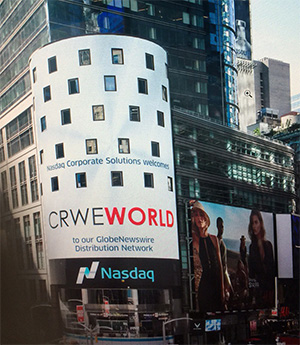Back to the Doctor’s Office: As Telehealth Declines, Demand for In-Person Care Drives a Medical Real Estate Shift
--News Direct--
In the wake of the COVID-19 pandemic, virtual healthcare saw a historic surge. But now, a new trend is emerging: patients are returning to their doctors' offices — and they’re doing it in droves.
According to new data from the Center for Telehealth and e-Health Law (CTeL), telehealth use has entered a steady decline since its peak during the pandemic. With the expiration of emergency policies that once expanded access to virtual care, analysts project a staggering 12 million telehealth appointments will be lost annually. This shift is placing renewed importance on brick-and-mortar medical practices—and driving an urgent need for physical medical office space in urban hubs across the country.
“This isn’t just a statistical dip — it’s a fundamental shift,” says Kurt Hackett, Vice President of Asset Management at Rethink Capital, which owns and manages the Medical Pavilion at 939 Ellis Street in San Francisco. “We're seeing patients of all types of medical disciplines re-emphasize the value of in-person care, and providers are responding by ramping up their physical presence.”
A Premier Option in San Francisco's Healthcare Corridor
At the heart of the resurgence of in-person care is the Medical Pavilion at 939 Ellis Street, a premier medical office building situated in San Francisco’s vibrant healthcare corridor along Van Ness Avenue. Nestled close by Sutter Health’s CPMC Van Ness Campus, the Pavilion offers a strategic, central location for healthcare providers looking to expand or relocate to a high-demand urban market.
“939 Ellis Street is perfectly positioned for providers who need immediate access to hospital systems, public transit, and city and suburban population,” says Hackett. “It checks all the boxes for modern medical delivery.”
The property features:
Proximity to top-tier health systems and medical campuses
Full and partial floor suites to accommodate a wide range of medical uses
Infrastructure designed to meet today’s clinical and compliance needs
On-site parking, and mass transit accessibility
What’s Driving the In-Person Comeback?
Several factors are contributing to the retreat from telehealth and the renewed interest in physical appointments:
Clinical Limitations of Virtual Care: While video consultations offer convenience, many conditions — such as orthopedic and cardiac issues, cancer care, and urological disorders — require physical examinations, lab work, and imaging that simply cannot be done remotely.
Insurance Reimbursement Reversions: As emergency-era policies sunset, insurers are reverting to pre-COVID reimbursement models which often favor in-person visits. This reimbursement structure creates an incentive for providers to bring patients back into the office.
Digital Fatigue: After years of Zoom meetings, online learning, and virtual appointments, both patients and providers are reporting burnout with screen-based interactions.
Trust and Patient Experience: Research continues to show that face-to-face care fosters stronger patient-provider relationships and improves long-term treatment outcomes—something digital platforms have struggled to replicate.
Investment Strategies Follow the Trend
For real estate investors and healthcare providers alike, the shift back to in-person care is shaping portfolio decisions in key metro markets like San Francisco, where aging medical stock and strong population density make modern medical offices particularly attractive.
“Providers are increasingly seeking newer, well-located facilities that reflect the current standards of care,” Hackett explains. “Our goal at the Medical Pavilion is to offer not just square footage, but an ecosystem where quality care can thrive.”
A New Era of Care Delivery
As the pendulum swings away from virtual-first healthcare, the demand for high-quality, strategically located medical office space is expected to grow — particularly in regions like the Bay Area, where healthcare innovation and patient demand continue to intersect.
For providers seeking to adapt and grow in this changing environment, properties like the Medical Pavilion at 939 Ellis Street represent a unique opportunity: the chance to be part of San Francisco’s healthcare future, right in the heart of its medical corridor.
For leasing inquiries at 939 Ellis St., contact Trask Leonard, president and CEO of Bayside Realty Partners at tleonard@baysiderp.com.
About Medical Pavilion at 939 Ellis Street: Positioned in the Van Ness medical hub, Medical Pavilion at 939 Ellis Street is a purpose-built medical office building offering flexible, large-scale space options for healthcare users, with direct access to public transit, nearby hospitals, and the city’s primary healthcare corridor. It can accommodate a range of specialties. It boasts a scenic rooftop terrace and available parking.
Contact Details
Leeza Hoyt
+1 310-343-3197
Company Website
View source version on newsdirect.com: https://newsdirect.com/news/back-to-the-doctors-office-as-telehealth-declines-demand-for-in-person-care-drives-a-medical-real-estate-shift-961694594
© 2025 News Direct Corp. All rights reserved.



















